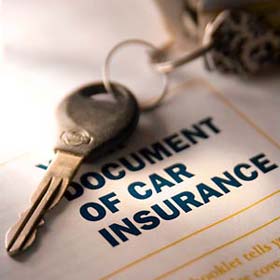For the last few years, as budget-pressured states and municipalities have pressed law-enforcement to write more speeding and traffic tickets, employed speed camerasand battled in court against drivers who warn other drivers about speed traps, there are voices, including those of some police departments, saying higher speed limits would be safer and contribute to our quality of life.
Take Michigan State Senator Rick Jones, a Republican from Grand Ledge, Mich., and a former police officer, who has proposed that state speed limits be raised to as high as 80 mph, up from the upper limit of 70 mph. The Detroit News recently supportedJones' measure with an editorial.
Jones knows local police forces may fight the proposal until they figure out how to replace lost ticket revenue.
"All good police officers oppose speed traps," Jones says. "Speeds should be posted scientifically and properly for the safest speed and then the officers will catch the big violators. We don't need to get the average Joe getting to work." Jones also said the higher limits would afford police the ability to focus on other enforcement areas such as impaired, distracted or careless driving, and restraint (seat-belt) enforcement.
There is support at the state level.
"With artificially low speed limits we put police in a position of actually ticketing safe drivers," said Lt. Gary Megge of the Michigan State Police Traffic Services. He's pushing for Jones' bill.
Illinois has recently upped its speed limits on rural highways from 65 mph to 70 mph. And there is support in Wisconsin's state house for similarly increasing the speed limit from 65 mph to 70 mph, a measure that has support from some of the state's newspapers.
AAA generally opposes higher speed limits. The organization said in its opposition to Illinois' measure that nearly half of the state's traffic fatalities involve speeding, with that percentage on the rise. But let's look behind the numbers. There were 1,248 fatal car accidents on Illinois highways in 2007 and 918 in 2011. The percentage of accidents involving speeding was 42% in 2007 and 47% in 2011. Not only are the numbers and percentages close, but drawing a straight line between higher speed limits and more traffic fatal accidents is not valid. Unknowns, for example, in those statistics are how many accidents may have been caused by motorists suddenly adjusting speed at the sight of a police speed trap, the number impacted by impaired drivers or influenced by road construction.
Why and what is the theory behind higher speed limits being safer for drivers? The National Motorists Association argues that higher speed limits make roads safer, endorsing research that supports the idea that setting speed limits around the speed that 85 percent of drivers travel.
"We're supportive of the 85th percentile rule," Michigan Dept. of Transportation DOT spokesman Jeff Cransontold The Detroit News. "There's a misconception that speed alone kills. It really depends on road conditions. If it means increasing the speed limit to make some roads safer, then it should be done."
There are a lot of variances in speed limits in the U.S. as anyone driving cross country can attest. The highest speed limits are for the most part 75 mph in western states and 70 mph in eastern states. Northeast states have 65 mph limits. A small portion of the Texas and Utah road networks have higher limits of 80 mph and even 85 mph.
Remember when speed limits kept drivers to a hair-pulling 55 mph? Between 1974 and 1987, the lower highway speed limit was a result of policy that said the lower speed limit would save gas. During World War II, the speed limit was set at 35 mph for the same reason. While it is generally true that most vehicles will use less gas if their speed is set between 55 and 65 in highway driving, proof that the national policy saved energy on the whole is debatable at best. The National Maximum Speed law was repealed in 1995 and speed limits were given back to the states to set.
Will higher speed limits make us less safe? After New York raised the limit on its highway traffic to 65 mph in 1995, the state's total crash rate dropped by 4 percent. In 2000, the Automobile Club of Southern Californiadetermined that higher speed limits in that state did not increase the rate of statewide accidents over a period of five years. Additionally, traffic fatalities as a percentage of miles traveled dropped sharply after the repeal of the 55 mph rule.
Speed, however, does have a direct effect on how serious an accident can be. Physics dictates that the force of impact increases with speed. But research in this area can be quickly out-dated as carmakers have addedtechnology to new cars-multiple airbags, seatbelt minders that chime until the belts are buckled, electronic stability control. These features are all found standard on every new car. Even more technology, such as sophisticated collision-avoidance systems, are being phased into cars, albeit mostly luxury cars for now.
In case you are wondering when speed limits were first set, it was in Colonial times. In 1757, in Boston, the board of selectmen set the speed limit for wagons, carriages, horses, etc. on Sunday was set at "a walking pace." Anyone exceeding this limit would be fined 10 shillings.
Today's vehicles have a lot more horsepower. And it could just be safer to let them run.
Click the link to read the article at AOL autos: http://aol.it/15u6TK5





